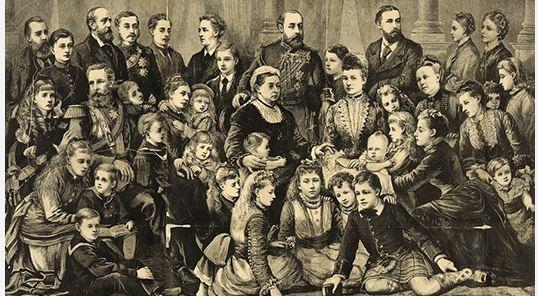Anabaptist communities

Täufergemeinschaften (translated as Anabaptist communities in English) refers to a group of Protestant Christian sects that emerged during the Reformation in the early 16th century. The name "Anabaptist" comes from the Greek word "anabaptizo", meaning "to baptize again," referring to their belief in adult baptism rather than infant baptism. This was a core theological difference that set the Anabaptists apart from both the Roman Catholic Church and other Protestant reformers, such as Lutherans and Reformed Christians.
Historical Context and Origins:
-
The Radical Reformation:
-
The Anabaptists were part of the Radical Reformation, a movement that arose as a response to the perceived failings of the mainline Protestant Reformation led by figures such as Martin Luther and John Calvin. While Luther and Calvin advocated for reforms within the Catholic Church, the Anabaptists believed that the reforms did not go far enough and sought a deeper transformation in both theology and church structure.
-
They were critical of the idea of a state-church alliance, which was common in many European nations at the time. Instead, Anabaptists advocated for a church of voluntary believers and emphasized religious freedom and separation of church and state.
-
-
Adult Baptism:
-
A key belief of the Anabaptists was that baptism should only be administered to individuals who are capable of making a conscious decision to follow Christ. Therefore, they rejected infant baptism, which was common in both the Catholic Church and in many Protestant traditions. They believed that baptism should be a public act of faith, which could only be meaningful if performed on an individual who had reached the age of reason.
-
This doctrine led to widespread persecution of Anabaptists by both Catholics and other Protestant groups, as their beliefs were seen as heretical and subversive.
-
-
Persecution:
-
Due to their radical beliefs, particularly adult baptism and refusal to take oaths or participate in state affairs, Anabaptists faced severe persecution across Europe. Hundreds of Anabaptists were executed, often by drowning (ironically, as a method of punishment for their belief in baptism), burning at the stake, or beheading.
-
In some regions, such as Switzerland, Germany, and the Low Countries, Anabaptist leaders were hunted down and killed. Despite this, the movement grew, and the Anabaptists spread to many parts of Europe and later to the Americas.
-
Core Beliefs and Practices:
-
Believer's Baptism:
-
As mentioned earlier, the central doctrine of the Anabaptists was the belief in believer's baptism—that only those who have made a personal, conscious decision to follow Christ should be baptized. This belief set them apart from both Catholicism, which practiced infant baptism, and other Protestant reform movements.
-
-
Separation of Church and State:
-
The Anabaptists were strong advocates for the separation of church and state, a belief that became a hallmark of their communities. They argued that Christians should not hold political office or serve in the military, as these roles involved oaths and violence, which they saw as incompatible with Christian teachings.
-
This belief often led to their persecution by both Catholic and Protestant authorities, who saw the Anabaptist rejection of state control over religion as a direct challenge to the established order.
-
-
Pacifism:
-
Anabaptists generally adhered to pacifism, rejecting the use of force and violence. This belief often placed them in conflict with both the Catholic Church and Protestant reformers who sometimes advocated for the use of force to maintain religious orthodoxy.
-
The pacifist stance was deeply tied to their belief in non-resistance to evil, following the example of Jesus, who did not resist when he was persecuted.
-
-
Simple Lifestyle:
-
The Anabaptists promoted a simple, communal lifestyle, often living in close-knit communities. This was seen as a way to focus on spiritual matters and to avoid the corrupting influences of the world. Many Anabaptist groups also practiced poverty and self-sufficiency.
-
-
Autonomous Congregations:
-
Anabaptist congregations were often autonomous, meaning that each congregation was self-governing and independent. There was little centralized leadership, and each local church was expected to make decisions collectively, emphasizing the idea of community and shared responsibility.
-
Major Anabaptist Groups:
-
Mennonites:
-
One of the most well-known and enduring Anabaptist groups is the Mennonites, named after the Dutch Anabaptist leader Menno Simons (1496–1561). Mennonites became an important part of the Anabaptist movement in the 16th century and are known for their commitment to peace, non-violence, and community service.
-
Today, Mennonites can be found around the world, with some practicing a traditional, simple lifestyle, while others are more integrated into modern society.
-
-
Amish:
-
The Amish are another prominent Anabaptist group, known for their strict adherence to a simple, agrarian lifestyle and their rejection of modern technology. The Amish split from the Mennonites in the 17th century and continue to maintain a distinctive culture, focusing on separation from the world and community-based living.
-
The Amish are most famously associated with their refusal to adopt modern conveniences like cars, electricity, and technology, believing that these things could disrupt their spiritual focus and communal harmony.
-
-
Hutterites:
-
The Hutterites are an Anabaptist group that originated in Austria in the 16th century and are known for their communal living arrangements, where members live and work together in large colonies. They emphasize communal ownership of property and shared resources, similar to early Christian communities described in the New Testament.
-
The Hutterites are often associated with peace and pacifism, and they maintain a strong sense of community and mutual support.
-
-
Other Anabaptist Groups:
-
There are several other smaller Anabaptist groups, such as the Brethren and the Church of the Brethren, that have similar beliefs but may differ in practices and structure.
-
Legacy and Influence:
-
The Anabaptist movement has had a significant influence on the development of Protestantism and Christianity as a whole. While they were persecuted by both Catholics and Protestants during their early history, many of the core principles they promoted—such as freedom of religion, separation of church and state, and non-violence—have had lasting impacts on modern Christian thought and practice.
-
The Mennonites and Amish continue to thrive today, and their commitment to community and peace remains an inspiration for many, particularly in their approach to living in a modern, often chaotic world.
Conclusion:
The Täufergemeinschaften (Anabaptist communities) were founded on radical principles of religious freedom, voluntary church membership, adult baptism, and pacifism. Though often persecuted in their early years, Anabaptists have left a lasting legacy in terms of religious practices, communal living, and the advocacy for non-violence and peace. Today, groups such as the Mennonites, Amish, and Hutterites continue to follow many of the same teachings and principles established by the early Anabaptists.

